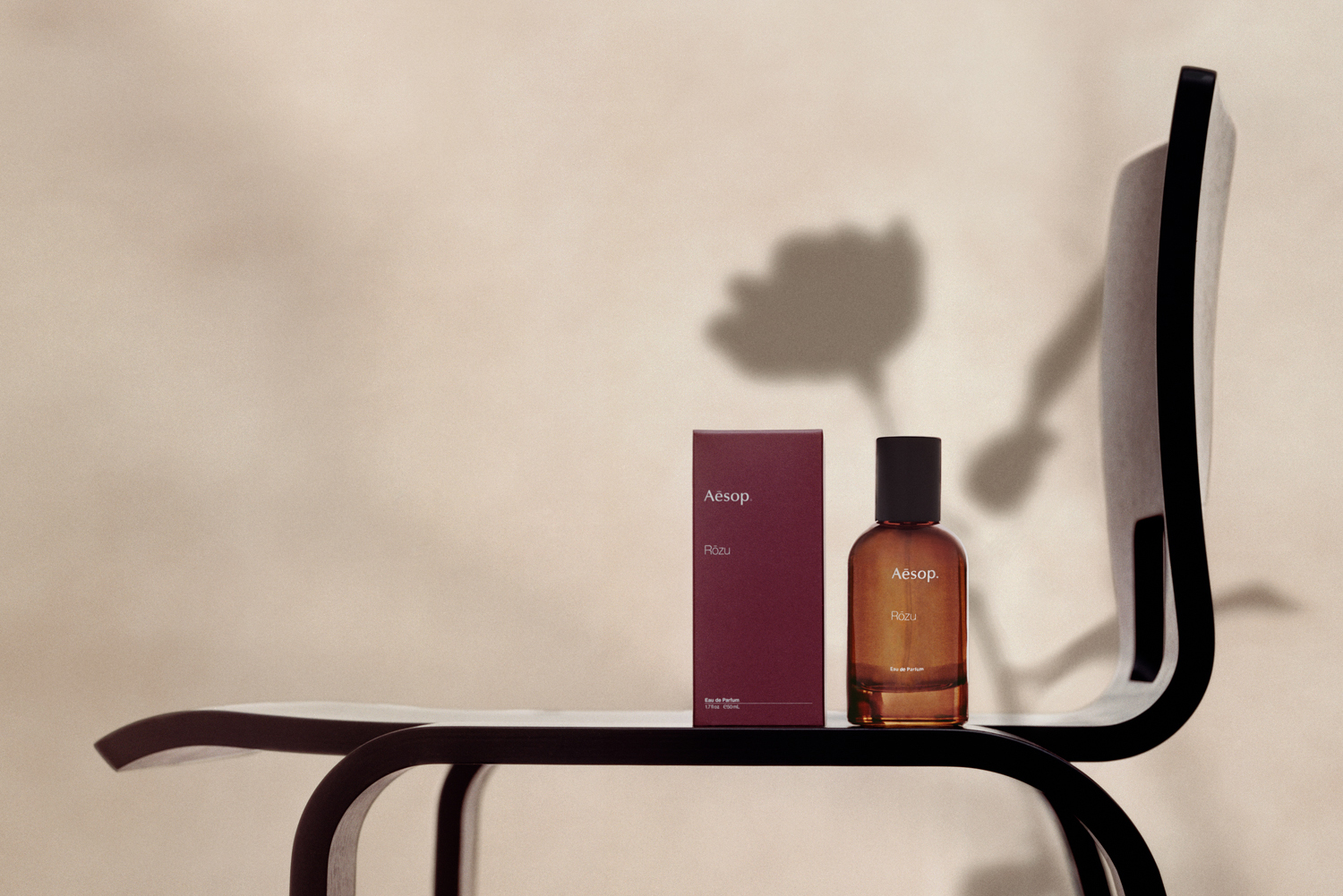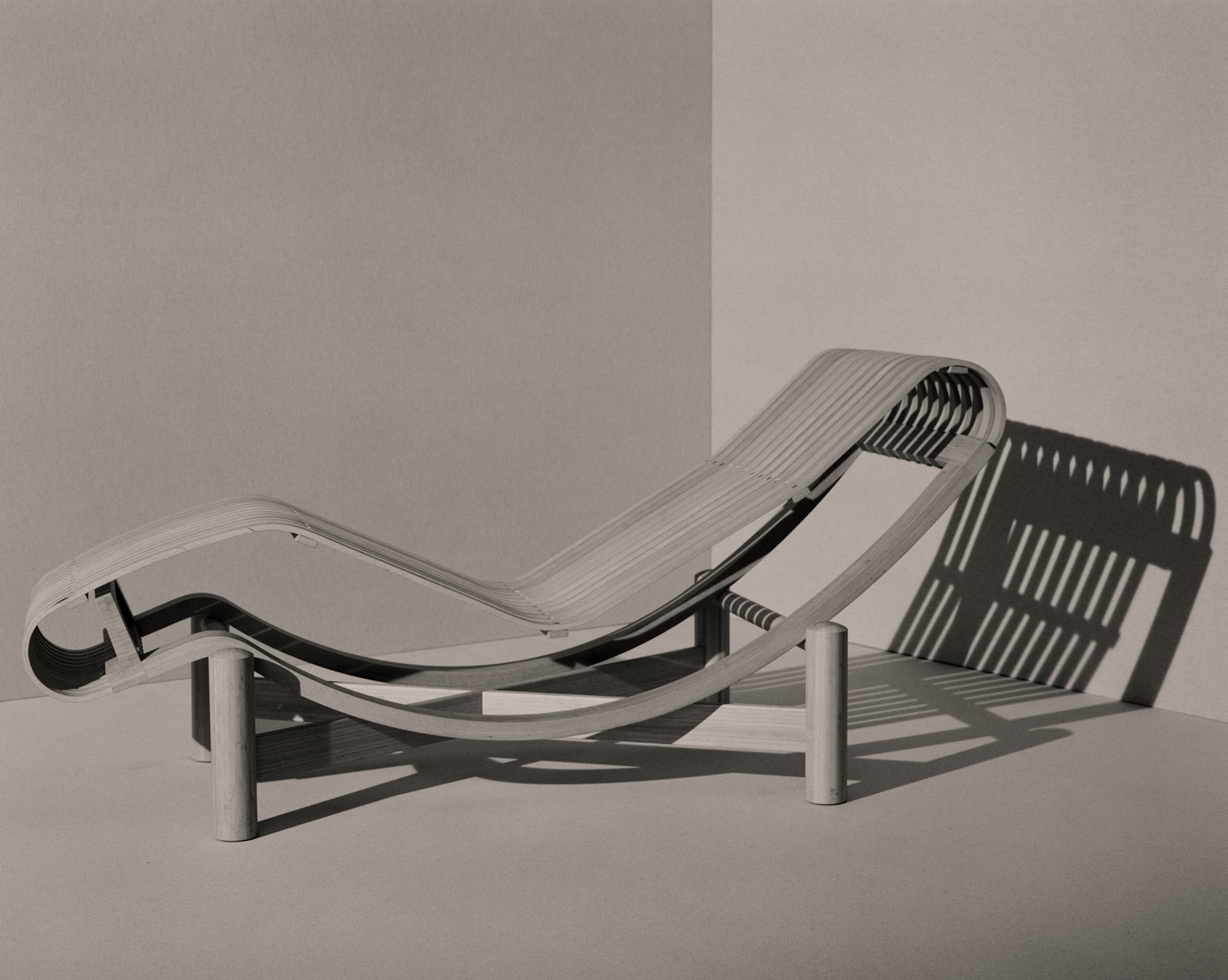AN EXCLUSIVE CONVERSATION BETWEEN ART4D AND THE MINDS BEHIND ‘RŌZU EAU DE PARFUM’ REGARDING HOW THEY INTERPRETED THE LIFE AND WORKS OF CHARLOTTE PERRIAND, AS WELL AS THE LIFE CYCLE OF A ROSE, INTO THE DESIGN OF THIS LATEST FRAGRANCE OF AĒSOP
TEXT: PAPHOP KERDSUP
PHOTO COURTESY OF AĒSOP EXCEPT AS NOTED
(For Thai, press here)

FLORAL COMPOSITION ON TATAMI FEATURING ROZU PRODUCT AND BOX WITH REPRESENTATION OF THE THREE MAIN INGREDIENTS: ROSE, WOOD AND SHISU (ICE) / PHOTO: JULIEN T HAMON (2020)

CHARLOTTE PERRIAND WORKING IN JAPAN IN 1940S © ACHP-ADAGP 2020
art4d: Charlotte Perriand was known to many as a free woman as well as la pionnière de l’art de vivre. She wrote in 1981 that “the extension of the art of dwelling is the art of living—living in harmony with man’s deepest drives and with his adopted or fabricated environment.” How does Aēsop transfer this very unique characteristic of Perriand into the design of Rōzu Eau de Parfume?
Barnabe Fillion: In formulating Rōzu, we took inspiration from Charlotte Perriand’s life as well as her work. In both personal and professional realms she strode with confidence and cheerful audacity, tempered by a fluid sensibility and influenced by her extensive travels—particularly throughout Japan and South East Asia.
Interestingly I wanted to work on the vulnerability of a rose, but I mostly focus on the strength of Charlotte with this rose. It’s quite masculine since it’s mostly blended with vetiver, then the shiso is also something very avant guarde in perfume, which reveals the multifaceted aspect of that flower, specially blended with a light woody musky note. It gives an idea of a rose which is very texturized and never smelled before

PHOTOS THAT CHARLOTTE TOOK IN THE ALPS, AROUND 1930 © ACHP-ADAGP 2020
art4d: We understand that the process behind Rōzu Eau de Parfum began in Perriand’s apartment in Paris. Which components in that apartment motivate each of you to come up with the character of this fragrance? This could be anything from decorations, furniture, photographs, to memories.
Barnabe Fillion: Our fragrance didn’t start in an apartment in Paris, but in contemplating the beautiful rose that was created for her. Then we met with Marsha Meredith, Aesop’s Creative Director, and Pernette, the daughter of Charlotte, in the last apartment of Charlotte. One thing that really amazed me was all the Japanese objects that was in this house. I also saw some beautiful stone that she picked up on beach and that she actually took a lot of pictures of; actually the amazing painter Fernand Leger interpreted in painting it – that was an ongoing collaboration that they had as being very very good friends. That level of friendship and creativity really inspired me.
art4d: The notes include in this fragrance resembles the life cycle of roses. Can you please elaborate? And what makes the Charlotte Perriand Rose distinct from other roses?
Kate Forbes: Rōzu opens with rich floral notes of Rose, alongside Petitgrain, Bergamot and vibrant Shiso—a reference to Perriand’s lifelong affection for Japan—and Pink Pepper, which confers fresh spiciness. The heart brings yet headier florals: Ylang Ylang is interwoven with dry, spicy woodiness; while Jasmine empowers the Rose, supported by light, smoky notes of Guaiacwood. Sandalwood hints at the deeper, powdery base notes, marrying the soft, woody green earth of Vetiver Extract with warm, sweet herbal notes of Patchouli and ambery, balsamic Myrrh. The whole is subtly underpinned by Musk.

MAP OF JAPAN SKETCHED BY CHARLOTTE PERRIAND ON HER HOTEL STATIONARY, IMPERIAL HOTEL TOKYO – 1940S © ACHP-ADAGP 2020
art4d: To Pernette, what is the first thing about your mother that comes to your mind when you smell the notes of Rōzu Eau de Parfum?
Pernette Perriand: The first thing that it evoked was a walk with Charlotte along a beach in Japan a long time ago; then came forest hikes in Méribel.
art4d: Rōzu Eau de Parfum is reminiscent of a voyage Perriand took between France and Japan. Which element or ingredient in the fragrance do you consider is what intertwines this travelogue between the Western and Eastern traditions together.
Barnabe Fillion: Rose is a universal symbol of passion, and for me, it also represent the Paris balcony of Charlotte’ last house, but also the Japanese rose that was created for her and that was finally planted on this balcony. Then the Shiso is very Japanese, Vetiver is very used in west and east and Myrrh is very ritualistic all over the world.
art4d: Since this new fragrance of Aēsop was inspired by the life and works of Charlotte Perriand, which projects of the French designer that each of you thinks match with Rōzu Eau de Parfum the most?
Marsha Meredith: For us the chair symbolised quite succinctly the wonderful paradox that is Charlotte Perriand. Charlotte pioneered new expressions of modernism by bringing the organic into the machine age and, craft into mass production. She sought to make luxury affordable and nature accessible, and to bridge the gap between East and West. This chair is of course heavily influenced by her time in Japan, and yet it is the work of a Parisian; it is bold and distinctive.






